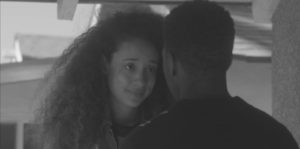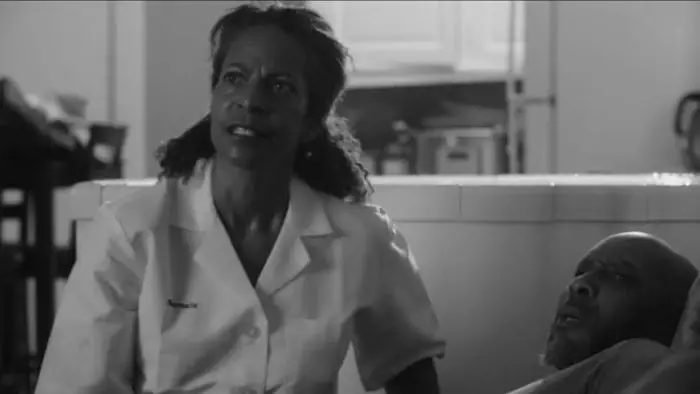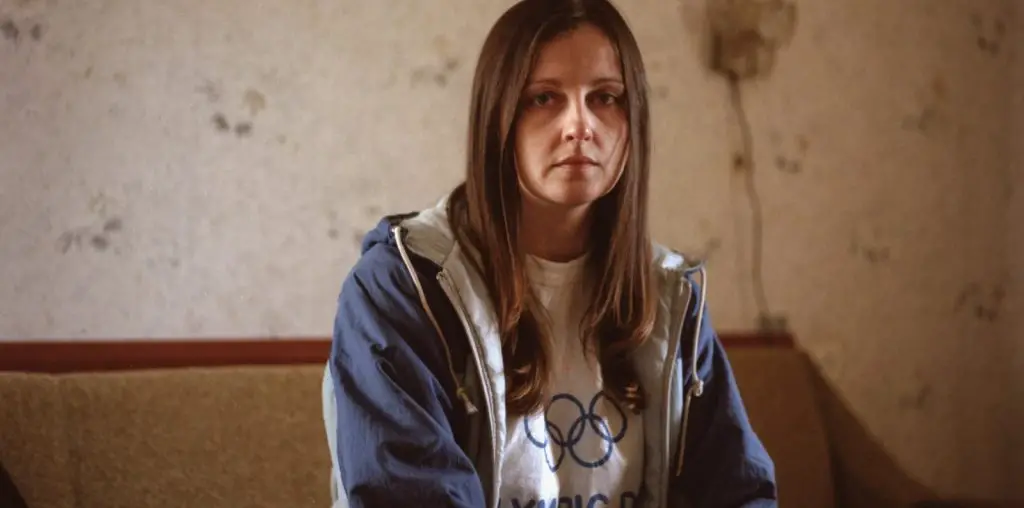
How was Rashad, who happens to be making his feature film debut here, cast in the lead? What was the process of getting him on board?
Marcellus: The role of Mickey was a little different because, as I said earlier, the actor I roped in for the role backed out, and I wasn’t sure what would happen, especially in the middle of a pandemic. We went through the process of auditioning people, and Rashad was the perfect one because he not only had the look I wanted but also the personality I wanted for the character. It was a double whammy that came out of nowhere.
And you saw it on the screen in the short and even more in the feature. Rashad elevated his performance. So, seeing his transformation from the concept to the feature was fantastic. And you go back and look at it; they’re both (David and Rashad) great performances, but then you see him add a little more when you get to the feature. The fact that he could do that and bring even more of a pure character to Mickey, from the concept to the feature, was incredible to me. That, too, to do that over three years playing the same character, you could get bored, but you look at each one. He makes that character even better from each perspective.
David Chattam: I didn’t get bored with it. I liked the fact that we shot the concept first. I could watch that, understand my performance, and tweak this if I get to play Randall again. And so, there were a few things, yet I didn’t change Randall much because I liked the character as much as he did. I feel bad that he was fun to play (laughs), but he was fun to play.
To give three years of effort to a character, especially someone as torn down as Randall or Mickey, does it take a toll on you as an actor? Of course, there is a professional aspect to playing any character, yet is there any specific impact such characters have on you?
Rashad: For me, I’ll say I was glad that we did shoot the short first as well because it allowed me to look back and see, you know, what things I can make better.
You always want to think about what you can make better, even though you don’t have that opportunity every time you’re like, man, I wish I could have gone back and, you know, have done that a little bit differently. But yeah, I held on to this character for three years. I think it helped me, and it also was challenging emotionally for me personally, just because he’s been through so much trauma. He’s holding on to so much. So, doing some work on my own and letting all that go was hard, but it was worth it. It was truly worth it.

“…there’s a certain truthfulness and boldness that color can’t present.”
David: Yeah, and for me, I’m going to be honest with you. I, you know, once we shot the concept and finished that, I let it go. But that’s what I do with any role. Once I do a project and it’s done, I just get it out of my system, get it out of my mind, and move on to the next project until, you know, this rolled around again, maybe about a month before we started filming the feature. I started getting back into the mindset of Randall, but for that time in between, why would you want to keep this dude in your mind for three years?
So I just let it go and then picked it back up. And yeah, but as Rashad said, it’s for me, it’s like when I see something I’ve done on the screen, I’m always just nitpicking, and I’m like, man, I wish I could have done this, wish I could have done that. And so, expanding what I said earlier, it was nice to have the chance to go back and do little nuances that I wanted to do the first time around that I may not have done, just change them up a little bit, but not much.
To shoot the film in black-and-white, Marcellus – was it a calculated decision you made early on, or did you realize while shooting it?
Marcellus: The black-and-white aesthetic was always somewhat of the vision for me because there’s a certain truthfulness and boldness that color can’t present. I felt this kind of story needed to be presented in black and white because I felt like it would be a distraction if it were in color. You need to get an understanding of these characters and the story and what they’re going through in daily life. Because, to some degree, that’s what life is. Life is, to some degree, black and white. It’s not all glitz and glamour. So, he sees almost daily, especially when dealing with an individual whose life is embedded in black and white with his sketch work and his artwork in general. That’s his passion. So that was nearly the main reason to have the movie in black and white because that’s his world.
You did create a juxtaposition between color and gray in the film. You added a specific color in one of the scenes. When Mickey is spending time with his girlfriend at an amusement park and, you know, going on a date. It creates a great contrast between his mental state and the state he wants to be in, the way he wants to feel.
Marcellus: Interestingly, that was a last-minute decision. That scene said a lot about Grace (played by Ashley Parchment) and her presence in Mickey’s life. That was Mickey’s good days of life. That was the one person that could get him out of his shell. That person could touch that brightness in his soul regardless of all he was going through. So that was perfect for her character to play off of that.
We weren’t going to put it in color. It was a last-minute decision when we ended up getting the anamorphic lens. And I said, there’s no way we can put this in black and white. We got to put it in color. So Jamil Gooding, my cinematographer, and I put it in color at the very last minute.

